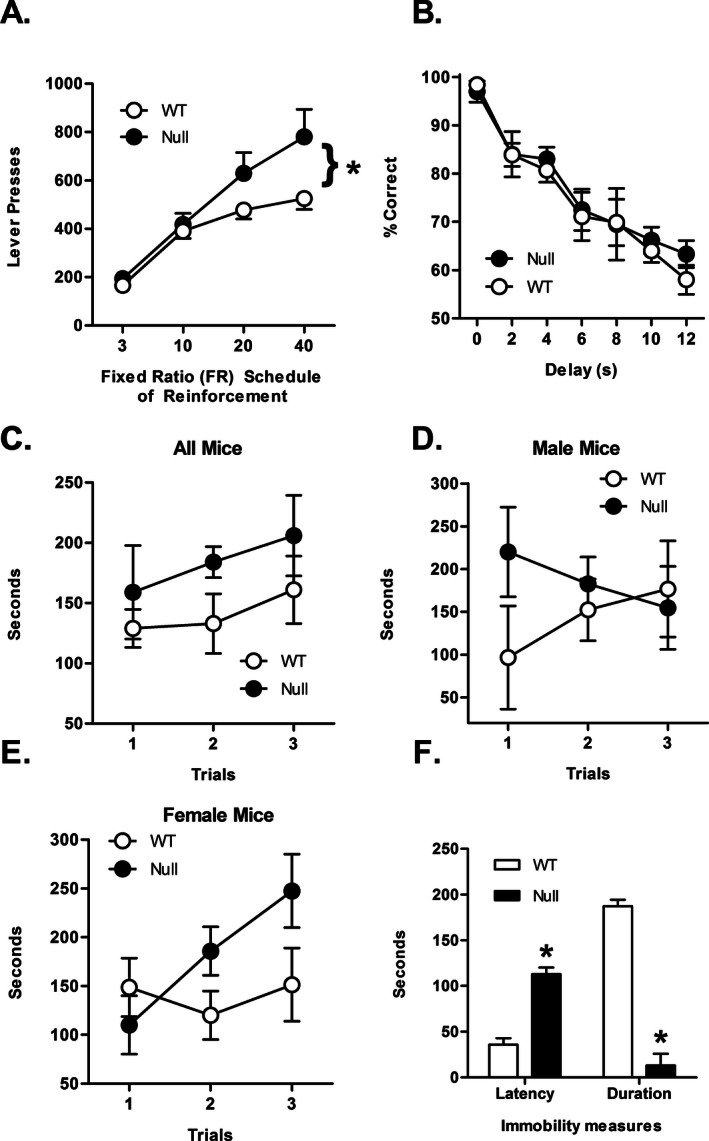Figure 1.

Behavioral characterization of Lphn3‐mutant mice and WT controls. (A) All mice were tested under a series of fixed ratio schedules of lever pressing for food reward (FR3, FR10, FR20, and FR40), one schedule/day for 5 days. There was a significant interaction between genotype and schedule, such that null mice responded more than WT mice on the high response ratio schedules. (B) A subset of mice was tested in a delayed response working memory task. While there was a significant main effect of delay as evidenced by the decrease in accuracy as the delay duration increased, there were no differences in accuracy between null and WT mice. (C) A separate cohort of mice was tested on the rotarod to assess motor coordination. There were no differences between null and WT mice in the length of time they remained on the rod. (D) Performance on the rotarod only in male mice. There were no differences between null and WT males in the length of time they remained on the rod. (E) Performance on the rotarod only in female mice. There were no differences between null and WT females in the length of time they remained on the rod. (F) Another cohort of mice was evaluated in the forced swim test in which latency to immobility and duration of immobility were assessed. Null mice took significantly longer to become immobile during the first 2 min of the session and spent significantly less time immobile in the last 4 min of the session compared to WT mice. Asterisks indicate a P‐value < 0.05.
